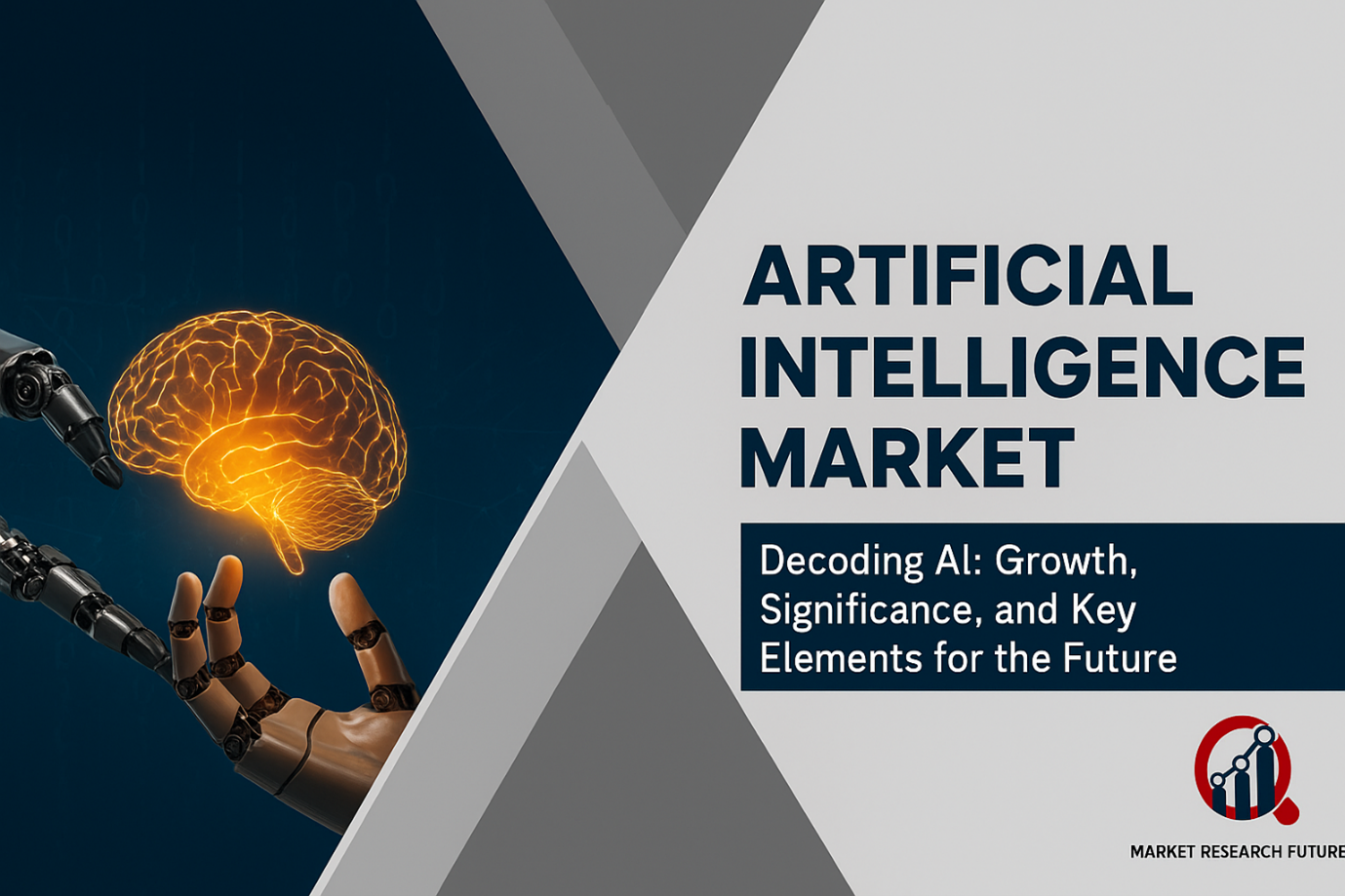Decoding AI: Growth, Significance, and Key Elements for the Future

Artificial Intelligence Market
The term "artificial intelligence" (AI) was first used in 1955, but its meaning and scope have changed a lot over the years. What was once thought to be a futuristic idea is now a part of everyday life that affects businesses, economies, and ways of life.
AI used to be thought of as a system's ability to do things that used to require human intelligence. Today, though, this idea has grown into something much more complex: AI is now seen as a system's ability to learn, change, and make logical choices to reach a certain goal. With this evolution, the field has split into several sub-domains that decide how smart, accurate, and flexible AI systems can be.
The Growth of AI
AI's rise has been nothing short of amazing. In the last ten years, AI systems have gone from being able to only look at data to being able to make decisions on their own, be creative, and think in complex ways. AI is no longer just for research labs and big tech companies; it now runs our cars, phones, businesses, and even our homes.
AI is now a part of everyday life thanks to chatbots, voice assistants, and recommendation systems. Meanwhile, industries are using AI to solve much bigger problems, such as climate modeling, drug discovery, financial forecasting, and smart infrastructure. AI systems are at the center of new ideas in both the consumer and business worlds because they can learn from huge amounts of data and think like people do.
The need for AI skills has also changed the way people work today. Jobs that used to be technical outliers, like data scientists or AI engineers, are now common. Creative and strategic fields are also using AI-powered tools to boost productivity. The growing number of AI-powered apps shows that AI has become the main force behind digital transformation in 2025.
Parts of Artificial Intelligence
There are some basic parts that make AI systems smart, and these parts are what give AI its power. These ideas are the building blocks of the technology, which makes machines more flexible, efficient, and able to do difficult jobs.
1. Machine Learning (ML): Machine learning gives software the ability to change based on how users behave without having to change the code by hand. It finds patterns, guesses what will happen next, and makes experiences unique to each person. Machine learning has changed the way digital systems interact with people, from giving personalized suggestions on streaming services to finding fraud in banks.
2. Deep Learning: Deep learning takes things a step further by copying how the brain processes information. It organizes algorithms into layers, which lets software look at data in a more abstract way. This layered processing gives AI the ability to do more than just spot patterns. It can also read images, understand natural language, and even make creative things like music, text, or art.
3. Neural Networks: Neural networks are the main part of deep learning. They are based on how the brain works. These nodes are connected in a way that mimics how neurons send signals, which helps AI systems think and learn more like people do. Neural networks are what make things like self-driving cars, language translation, and image recognition possible.
These parts work together to make AI possible, allowing it to keep learning, getting better, and changing what machines can do.
Final Thoughts
AI is no longer just a dream; it is a real part of our lives now and will be in the future. AI has become a key part of progress, from making everyday life easier to solving some of the most difficult problems facing humanity.
But, like any force that changes things, AI has its own set of arguments. It opens up new possibilities for innovation and efficiency, but it also makes people wonder about job loss, how to use it ethically, and where the line is between human and machine decision-making. The challenge ahead is not to stop AI's progress, but to make sure it moves in a responsible way that enhances human potential instead of replacing it.
In short, AI is both a useful tool and a thought-provoking problem as of 2025. It is here to stay, and the way we use it will shape not only industries but also the future of human society.

Leave a Comment